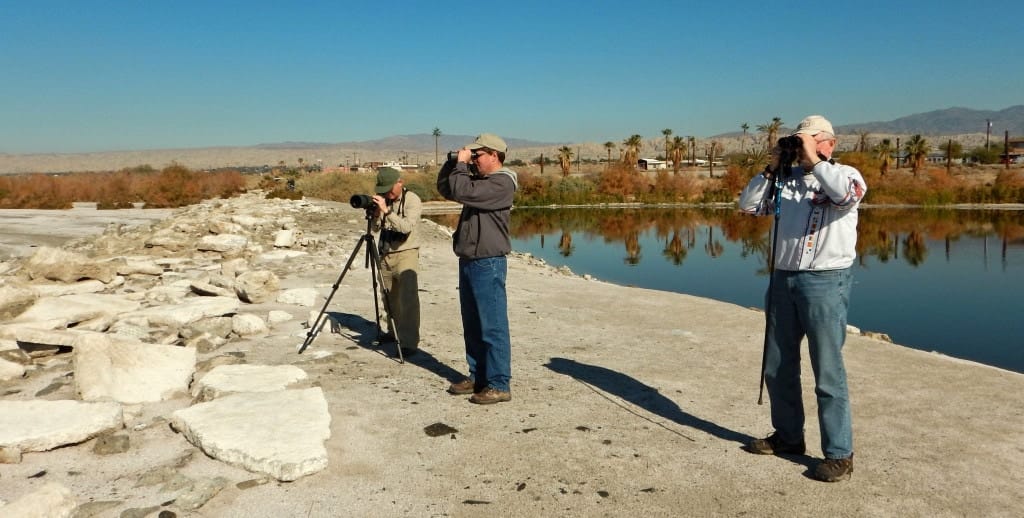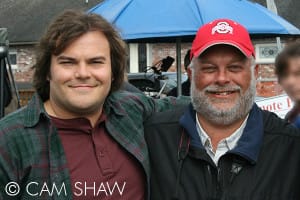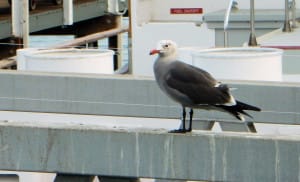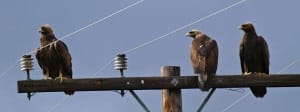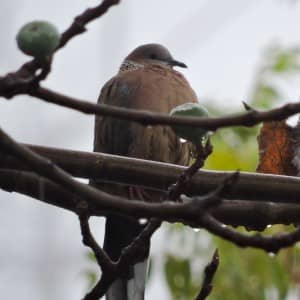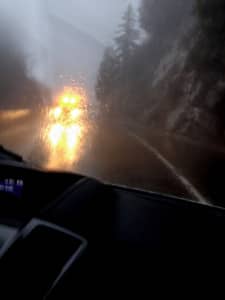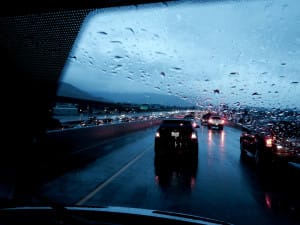Southern California Trip Report
Jan 12, 2016 | by Greg Miller
Wow! That week went incredibly fast! 208 species! I was anticipating about 160 species total. The number is good. But what matters is uniqueness. What do I mean? Well, getting a great bird in Southern California may be a common bird on another tour. In short, it means more effort to see a bird we’ll easily see elsewhere. But, the good news is that our focus was strong enough of Southern California and the birds we could find most easily on this trip (compared to the other trips) paid off. We have a number of goodies that were best found in Southern California in winter.
As with any Big Year, this one started out with hiccups–those unplanned things that happen at the last minute. I got a used 13-inch Mac to travel with which I had high hopes for using as opposed to my 17-inch, 11-pound Windows behemoth. First hiccup was that the version of Safari on this older machine was not supported by Google Mail. No problem. I can use my iPad or iPhone to handle email. Second hiccup was that the version of Numbers (spreadsheet) did not even open my Excel spreadsheets. I had read that Numbers reads everything. Ah. But a newer version. But all my preparation for this year was done using Excel. Aargh. And with limited time I didn’t confirm this until just a few days before leaving. Then there was all the new equipment supplied by Leica: the NEW Trinovid HD 10×42 binoculars, 65mm APO telescope with a 25-50x eyepiece, and a V-LUX (typ 114) camera. The camera is easy enough to use out of the box, but it will take a little time to use the great features of this camera. One of those features is being able to shoot 4k video. But I needed a faster memory card. I ordered some on Amazon along with an updated birdfinding guide to Southern California. As I write this, I am still waiting on that shipment (made just before Christmas).
Just when I thought I’d gone through enough of those hiccups, another one occurred on my trip to San Diego On Saturday, January 2, I had a 5:50am American Airlines flight from Cleveland to San Diego. After a short night I left the house at 2am to get to the airport by 4am. I’m glad I had some extra time. The Blue Lot was closed. The Red Lot was closed. The Orange Lot was still open. I pulled up to the gate (which is operated only by credit card) and inserted a credit card. Denied. Again. Denied. Again. Denied. So I backed up and tried the gate beside it. Same story. So I tried it again with another credit card. And another. None of them worked. And it’s the only open lot. I drove around the terminal twice and finally found long term parking at the Sheraton. But the Sheraton’s price is not so very economical at $15/day. But by this time I’d blown through 30 minutes of trying to park and was out of time. I parked and got a shuttle to the airport. Down to an hour before the flight leaves. I checked one bag and hurried to security. I was glad I was TSA pre-checked so I could get through security faster. But, that gate was under construction and there was no fast lane. After another long wait in line I finally got through. I hurried to my gate with only minutes to spare before boarding. I didn’t have time to go to the bathroom. And I didn’t have time to buy any water. But I made my flight to Dallas-Ft Worth.
The flight was uneventful. I got off and rushed to the nearest bathroom. No, I really don’t like airplane restrooms. Then I relaxed and walked to the first monitor to catch my connecting flight. I thought I had a couple hours. But like everything else to this point, that would change. What did I find on the monitor? The word “Cancelled” appeared next to my flight number for my connection to San Diego. I figured it would not be a problem since I assumed there would be more flights to San Diego. There were more flights. But the next one (the last one for the day) was full. I hurried to a counter and talked to an American Airlines agent. I explained that I was a tour leader and needed to be in San Diego on time to meet my participants. The solution? Catch the next flight to a different airport–Orange County Airport (John Wayne). I didn’t even have time to call Steve Ritt, my co-leader living in Southern California. I hurried once again to my next departure gate and made it just as they were boarding. I checked with the agent there and was informed that my bag would still go to San Diego. Great. My luggage is going on vacation without me.
Again, I had no time to buy water in the airport. Thankfully I got about a 4-ounce glass on the plane. Yippee. From there, things started to work better after Steve braved traffic for almost 3 hours to pick me up. We scouted our way south along the coast from Newport Beach to San Diego. Not only was the variety good, but I was once more awed by the sheer numbers of birds. What a great place!
Day 1 – January 3
Steve and I rented a van and met everyone at the airport within half an hour of each other. Cool. We had everyone. We birded a little right away and then had lunch on the waterfront while birding, of course.
We had delicious fresh seafood in the company of many species of birds including this Heermann’s Gull which I shot with the point-and-shoot in my pocket. We birded the San Diego Bay and surrounding area for the remainder of the day. The half day of birding was a bonus. Sometimes our participants have staggered arrivals throughout the day and not much birding is done. But for our half day, we ended up with 74 species and a number of our target species including Cinnamon Teal, Pacific Loon, Eared, Western, and Clark’s Grebes, Brandt’s Cormorant, Snowy Plover, Heermann’s and Western Gulls, Anna’s Hummingbird, Red-crowned Parrot, and Say’s Phoebe.
I had hoped to update this blog every night and an electronic form of checklist, too. But, I nixed that easily by forgetting my power cord to my behemoth laptop at the first hotel. So no updates to the blog happened nightly. Nor did electronic updates to the checklist either. Sigh. Smooth, Greg. Real smooth. I called the first hotel and had them hold the power cord at the front desk since we would return there at the end of the week. That is why I am doing all my catch up work now after the trip is over.
Day 2 – January 4
Our first full day of birding. The warmer weather we had on arrival day was gone. It was replaced with sporadic light rain and wind and colder temperatures. We started the day early enough to be at Imperial Beach near the Mexican Border by dawn. Starting the day with a Ridgway’s Rail was a sign of more good things to come despite the weather. We found a Pelagic Cormorant at the pier and after a few minutes a Brown Booby gave us a rather good view for all in flight out over the Pacific Ocean.
We birded our way up the Pacific Coast and picked up Wandering Tattler, Black Turnstone, Glaucous-winged Gull, Allen’s Hummingbird, Nuttall’s Woodpecker, Vermilion Flycatcher, Tropical and Cassin’s Kingbirds, Hutton’s Vireo, Bushtit, Bewick’s Wren, California Gnatcatcher, Wrentit, California Thrasher, and California Towhee. Top bird of the day for me was a lifer–a first experience seeing this species. A Scaly-breasted Munia! It was formerly called Nutmeg Manakin. Now accepted by the American Birding Association. Another species of note that we saw that is not an acceptable species (and not a part of our 208 total species) was the extravagantly beautiful Black-throated Magpie-Jay. It is a stunning creature! Too bad I was not able to get any photos. We finished the day in Newport Beach and had 106 species for the day.
Day 3 – January 5
This day was a lot colder and the wind was howling. Walking around in a driving rain made birding difficult. But this is the sort of things that make birding such an adventure. Already we have war stories battling the elements…in Southern California! Of course, it wasn’t just the elements. We also have other battle wounds. Well. At least I do. In the gray light of dawn after seeing a Eurasian Wigeon I walked backed down a small by moderately steep bank. My tired foot did not step high enough to walk over the root of a salt bush in front of me. I tripped over it. I attempted to catch myself with my other foot. But it hit a root, too. I was going to fall headfirst into the bush. Then, everything went into super slow motion. No. I don’t have video. But I should! It would have been epic! I hit the bush with my left arm and chest and rolled right onto the ground. I ended up with only minor scrapes. But my new Leica binoculars suffered a small, but permanent dent on the casing. Thankfully, the view is unmarred and completely as good as they’ve always been…for the whole 4 days I’ve been using them. They are now “Miller-ized”. (I still have scabs on my arm and shin from the fall. I’m just happy it wasn’t worse)
We ticked a couple Reddish Egrets as the rain increased in intensity. It was in these conditions that our brave and courageous driver (and birder extraordinaire) drove us to a location near downtown Los Angeles. Let’s just say I was glad that I was not driving. Ugh. We got to a fairly run-down area of town to look for our next species, the Spotted Dove–a bird in rapid decline. They are gone from much of their previous range. The skies dumped buckets of rain on us over the next 1.5 hrs. We were all tired, cold, and drenched. We gave one last shot around the little park and turned up nothing. We all gave up on it. Only a handful of birds still exist in L.A. They can be easy. But most of the time it takes effort. On a big year schedule, one does not have the luxury to spend too much time on any one species. Rare Spotted Doves count the same as dirt common House Sparrows–they both count 1 in this numbers game. As we were leaving the area Steve stopped at one last alley. We looked down the tiny street and saw a bird perched on a branch over the road. “Is that it?”, Steve asked. I paused in disbelief. “Yes. Yes it is.” I said only after mustering the strength to overcome my shock and disbelief. There were more of them in the same tree. Wow! What are the odds that we would search an hour-and-a-half and not turn up anything and then THEE LAST ALLEY we check before leaving the area has the target species?!?!
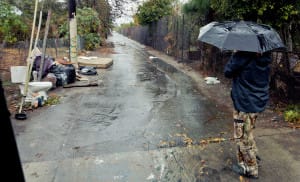
Spotted Dove on branch over road – near downtown Los Angeles – CA – 2016-01-05 – Greg Miller – Nikon Coolpix AW120
Elated we drove north connecting with “the 5” (Interstate 5 in Southern California lingo) and ending up in Lancaster area for the night. We ended this day with 87 species and added goodies like California Quail, Black Oystercatcher, Surfbird, Barn and Great Horned Owls, and surprise Red Crossbills.
Day 4 – January 6
We birded the Antelope Valley (Lancaster and eastward). Dawn light on the mountains was spectacular.
It was even colder this morning. But after seeing a number of the awesome looking Ferruginous Hawks we all felt a bit warmer somehow. Add a Prairie Falcon. And an unexpected [at this location] Burrowing Owl. Ahh. Southern California is full of surprises. The sage-speckled Antelope Valley north of Los Angeles is sadly no longer a place for its namesake antelopes.
There were pools of water in this normally arid region from the rain overnight. About mid morning, the rain started again. But today it was even heavier than the day before. Dry washes were full of water. And everywhere we stopped it seemed rain was in our faces no matter which way we faced. We searched in vain for our target Le Conte’s Thrasher, but came away with a good consolation prize–Bell’s Sparrow (Sage Sparrow is now split into this and Sagebrush Sparrow). A short hike into the sage in one area produced a number of other sparrow species, an Oak Titmouse, and Tricolored Blackbird–a bonus bird for our trip. After lunch, Steve found a muddy plowed field with a flock of Mountain Plovers–an unexpected find for our trip!
We left the Valley and headed south again into the San Bernadino Mountains. The forecast was grim for areas just to our east with a winter storm warning and 1-2 feet of snow possible. We decided to drive as far as we could safely go toward Crestline. As we gained in elevation we found a few hardy birds to add to the list including Western Scrub-Jay, Mountain Chickadee, and Western and Mountain Bluebirds.
And then it all turned to the heaviest rain we had encountered.
And to finish out the day, traffic in San Bernadino. Southern California style slow.
We finished the day with 52 species. But, considering the weather conditions and the birds we were able to add, a great day overall.
Day 5 – January 7
Very soggy morning. Many dirt roads were impassable but clouds looked like they could break up. Added Tundra Swan and Ross’s, Snow, and White-fronted Geese early. We arrived at San Jacinto Wildlife Area later in the morning. Rock Wrens were calling on the rocky hillsides. At one of the ponds an American Bittern flew up from the marshy edges. Both a Peregrine and a Prairie Falcon were found perched on telephone poles. We watched up to three Golden Eagles interacting and then posing for photos on a telephone pole.
After leaving the cavorting eagles we headed up into the San Jacinto Mountains. Skies grew overcast again. And as we ascending the mountains it grew colder. Snow cover deepened as we climbed in elevation. In fact it became a winter wonderland as we approached Idyllwild.
About 3-4 miles before we reached Idyllwild we had brief views of a Mountain Quail scurry up the hill away from the roadside. Wow. A definite bonus bird. At Idyllwild we had good looks at Hermit Thrush and Steller’s Jay. Three Band-tailed Pigeons were also in town. We drove down the slopes into the desert at Palm Springs for the night. We finished the day again breaking the 100-mark with 103 species.
Day 6 – January 8
First gorgeous morning all week. We began at the small Ruth Hardy Park. Surprises awaited us. A beautiful male Costa’s Hummingbird was working the bushes with red flowers and displaying its dramatically shaped purple gorget. Verdins were calling from the shorter trees. A Bewick’s Wren and an Abert’s Towhee were both calling near the edge of the park.
One of the first new trip birds at the huge Salton Sea was American White Pelican. At water’s edge we were standing over 200 feet below sea level. Thousands of gulls were there and the water was peppered with Western/Clark’s Grebes as far as one could see from the shores of the north edge. Black-tailed Gnatcatcher and Cactus Wren were both found along the northeast edege. White-tailed Kites and White-throated Swifts were seen flying over the agricultural areas to the southeast of the Salton Sea. In fading light of day our diligent crew did find an adult Yellow-footed Gull, an unusual find at this time of year. Darkness finally overtook the last rays of light as we traveled the 2.5 hours back to San Diego. We had a total of 96 species of birds today.
Day 7 – January 9
Today is a flight day. I had an early morning flight, but the rest of the team went out with my co-leader, Steve Ritt. They birded locally and turned up Pine Siskin, and Townsend’s, Black-throated Gray, and Black-and-white Warblers. Total for the few hours of birding before their flights was 28 species. The grand total for this exciting tour was 208 species of birds.

































